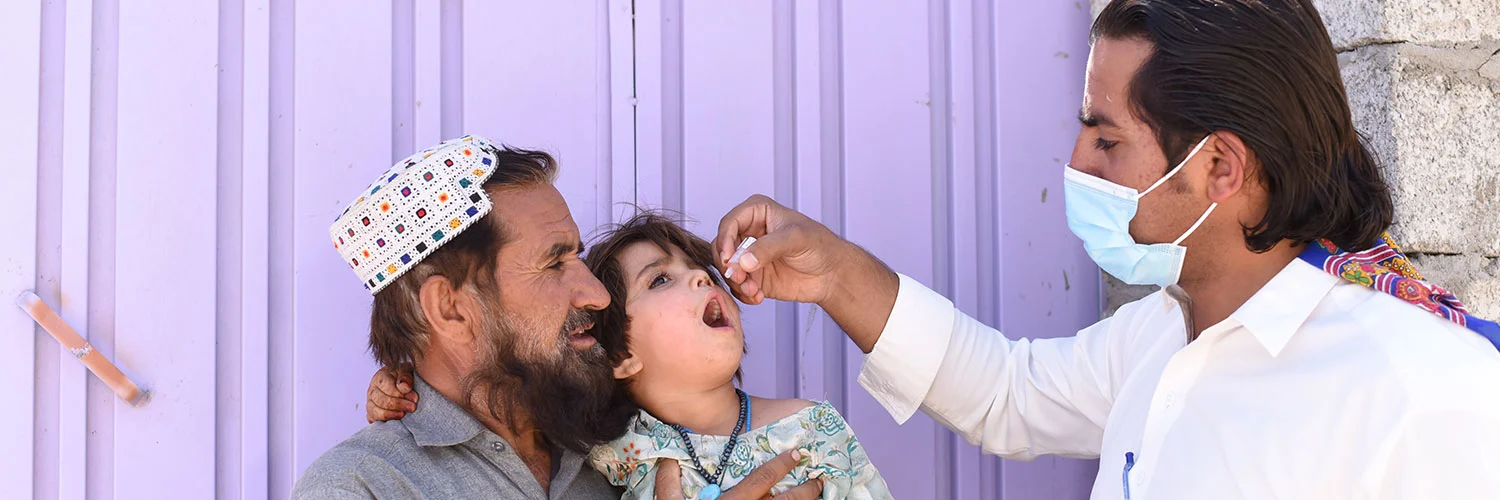Islamabad, September 21, 2016: Pakistan and Afghanistan polio teams gathered in Islamabad today to deliberate on common challenges and issues faced by both countries during the course of polio eradication. The meeting agreed on improving the cross border coordination mechanism to fast track progress finish line. The meeting was organized in the backdrop of the recent outbreak in the South KP / FATA and South Eastern Afghanistan Block. Basic objective of the meeting was to review status in the Common polio Reservoirs and joint planning to address the outbreaks.
Chairing the meeting jointly, Prime Minister’s Polio Focal Person, Senator Ayesha Raza Farooq and Dr. Hidayatullah Satenkzai, National Polio Focal Person, Ministry of Public Health, Government of Afghanistan agreed on closing remaining coordination gaps at the provincial / regional / district level; developing specific plans to strengthen SIAs quality and micro-synchronization along the border; mapping and strengthening vaccination of high-risk mobile population and achieving eradication-level AFP surveillance quality.
Dr. Hidayatullah Satenkzai underscored the need of screening all mobile population for polio vaccination as over 1 million population cross the border formally. He highly appreciated the joint team work of Pakistan and Afghanistan polio teams and emphasized polio eradication as a collective responsibility over and above any political difference.
In her opening remarks, Prime Minister’s Focal Person on Polio, Senator Ayesha Raza Farooq stressed on improving the campaign quality, coverage of high risk mobile populations and surveillance quality. “Potential missed children and missed polio circulation should be taken as a serious risk to our goal”, said Senator Farooq.
Sharing the updates from the program, Senator Farooq apprised the meeting on latest expansion of community-based vaccination as planned in Karachi, Peshawar/Khyber and the Quetta block covering almost 3.3 million children, launch of the Mobile Team Action Plan in northern Sindh, parts of Karachi and southern KP to further strengthen all aspects of micro-planning, team selection, composition and work burdens and supportive supervision before during and after campaigns.
Dr. Rana Muhammad Safdar, National Coordinator, NEOC raised his concern on the immunity gap in North and South Waziristan and South Eastern Afghanistan that allowed the virus to transmit over a wide geographical area between Hangu through D.I. Khan up to South East Afghanistan. Dr. Rana Safdar also highlighted that all polio cases in South Waziristan and South Eastern Afghanistan are zero dose and are among the mobile populations, especially the returning displaced populations.
Presenting the guiding principles to progress the current situation, Dr. Rana Safdar shared that full-time vaccinators (CHWs) will now cover 100% of target population in Quetta block and Khyber-Peshawar, and 67% of Karachi, in addition to the 9 bOPV SIAs planned, full-dose combined bOPV/IPV round to be implemented in Jan/Feb 2017 in both ‘core reservoir and high risk districts, strengthening of Routine Immunization to further decrease fraction of under-immunized children which is highest among children <1 years is also underway. “PTPs have been prioritized with especial focus given to trans-national and interprovincial posts while monitoring and evaluation activities including expanded LQAS, third-party pre/intra/post-campaign monitoring are further enhanced”, added Dr. Rana Safdar.
“Under our Surveillance for Eradication plan, the programme is improving surveillance by focusing attention on “missed AFP” cases and “missed transmission”, Dr Rana Safdar further said.
The meeting also led to operational discussion among regional and district teams agreeing on common strategies during upcoming campaign as well as the optimal vaccination pf high risk mobile population.

